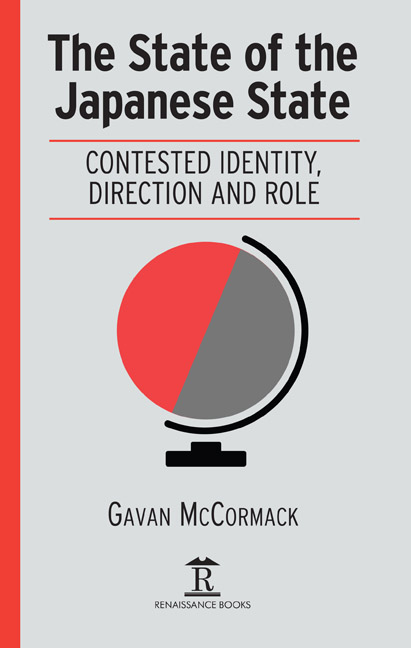Book contents
- Frontmatter
- Contents
- Preface
- Chapter 1 The Improbable Package
- Chapter 2 The Client State
- Chapter 3 The Client State’s Client State
- Chapter 4 Okinawa – State Violence and Civic Resistance
- Chapter 5 Around the East [China] Sea
- Chapter 6 The Construction State
- Chapter 7 The Constitutional State
- Chapter 8 The Rampant State
- Chapter 9 Conclusion
- Afterword
- Index
Chapter 6 - The Construction State
Published online by Cambridge University Press: 04 May 2022
- Frontmatter
- Contents
- Preface
- Chapter 1 The Improbable Package
- Chapter 2 The Client State
- Chapter 3 The Client State’s Client State
- Chapter 4 Okinawa – State Violence and Civic Resistance
- Chapter 5 Around the East [China] Sea
- Chapter 6 The Construction State
- Chapter 7 The Constitutional State
- Chapter 8 The Rampant State
- Chapter 9 Conclusion
- Afterword
- Index
Summary
RESILIENCE
MORE THAN TWO decades have passed since I first wrote of what I called Japan's doken kokka (the “construction state” or “public works state”). I used the term to refer to the peculiar public works-centered Japanese political economy in which an “Iron Triangle” of conservative politicians, bureaucrats, and finance and construction industry heads set national investment priorities within the overarching frame of the Zenso, or National Land Development Plan (initiated in 1962), to channel the national savings into construction and public works projects to which in due course they themselves descended, by silken parachute, to lucrative, post-retirement sinecures. Public works expenditure generated employment and the nation-wide political support mechanisms for the LDP-managed state. Its overarching concern was to maximize GDP growth. As the US economy centered on the military and military-related sector, and the European on the welfare state, so the Japanese was built on this doken kokka.
Begun in the early post-war decades when reconstruction necessitated heavy social infrastructure spending and growth was so rapid that public investment programs often refunded debts, the system was refined but it became gradually pathological under Tanaka Kakuei (Prime Minister 1972–1974). Especially from the first oil shock of 1973, pump-priming, public works packages funded by debt-generating bonds became a chosen instrument for pressing forward his grand design for “remodelling the Japanese archipelago.” Fiscal conservatism within the LDP and the Ministry pf Finance gave way to fiscal activism and interest politics, public investment becoming the instrument to create demand and employment. The second, or “New” Zenso (1969– 1976) began the spiral into “extrastructure” (works undertaken for their own sake or without obvious social need) investment). Deficitdependence deepened, debt snowballed, environmental costs escalated.
In June 1990 the Kaifu Toshiki government (August 1989 to February 1991) under heavy pressure at the “structural impediment” trade talks with the United States and as part of the design for expanding domestic demand, launched a program for massive public works spending (naiju kakudai). The initial target was 430 trillion yen spending over 10 years, but just months after the initial promise, the bubble of unsustainable and “future eating” growth burst, leaving its collusion, corruption and fiscal irresponsibility at least partially exposed. Undeterred, however, the Maruyama government in October 1994 adopted a “Basic Plan for Public Investment” that increased the figure to 630 trillion yen which it promised to spend during the period 1995–2007.
- Type
- Chapter
- Information
- The State of the Japanese StateContested Identity, Direction and Role, pp. 167 - 189Publisher: Amsterdam University PressPrint publication year: 2018



